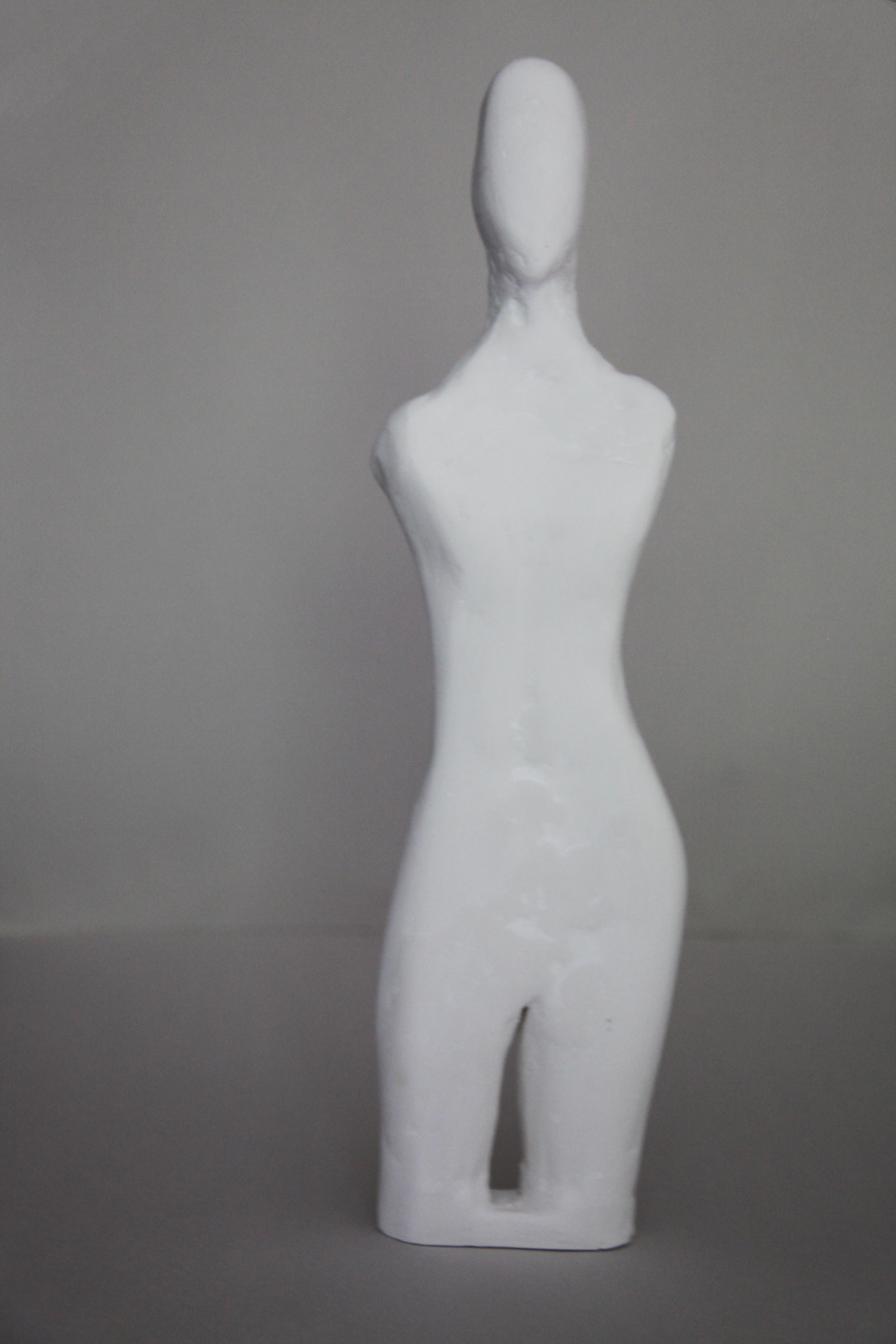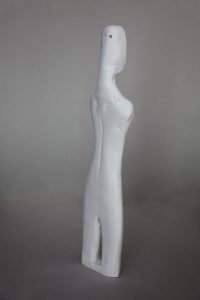Artist Statement:
This project was a whirlwind of obstacles, impulsive decision making, problem solving and exploration. By delving into two things I’ve never done– working extensively in 3D, and working with plaster and alginate. While I have done smaller (and forced) projects with clay, I prefer more easily controlled mediums such as graphite and colored pencil because a lot of my work leans towards realism and I am extremely uncomfortable with creating most types of abstractions or any type of “loose” art work. This project, however, forced me out of my perfectionism, though not without a huge struggle.
My initial plan was to create three elongated forms with a wave-like structure flowing through and around them to represent the African dancers I witnessed at my international days at school. The idea of the body, to me, related to identity and how a person’s background and experiences are visible in both their physical appearance and their mannerisms and behavior. I wanted to capture this with the confidence and unapologetic foreign-ness of these dancers. This same unapologetic attitude is so evident in my mother– especially as a London-born but originally Somali woman who suffered through the strife there for a few of her younger years to then move on to live alone in India, London, Chicago, Switzerland and finally become a badass computer science major and IT manager in the UAE where her boss was allowed to (and really did) tell her that she wouldn’t get promoted simply because she was a woman. This idea, along with some technical difficulties, was what morphed my plan. The three forms were cut to one, and the wave that moved through them was cut too as the form changed from a dancer to a strong, solid, plaster form that stands tall and powerful despite a few visible cracks.
First, I hand-sculpted her out of clay, created a mold in alginate, then casted it with plaster. I made a round plaster base for her to stand on, but that fell apart. This ended up being a happy mistake, though, because I then sanded down the bottom of her legs and she now stands on her own, which furthers the meaning behind her form. The flowing, moving dress that the ladies were wearing was also removed, because I had two failed attempts. My first failed attempt involved a textured and patterned fabric that was too heavy to be held up by the plaster I dipped it in when it dried. The next attempt didn’t fail technically, but I didn’t like how it looked and didn’t think it added anything to the piece. I tightly wrapped wire around it initially, but then decided to create the illusion of movement by making it more loose and curved, as though she was spinning. I then weaved string through the wire to create the illusion of patterned fabric that made the texture of the plaster visible. When I finished, however, I stepped back and became immediately frustrated with the fact that it didn’t look the way I envisioned it. As mentioned before, I’m a perfectionist, and get extremely frustrated when I don’t succeed immediately. Because of this, I ripped it off and left the studio. The next morning, I looked at my work again and realized that I liked how the figure stood on its own without any further steps, and canceled my plans to make a third attempt.
Overall, this piece was a working design throughout the whole process. This material and just the nature of the project in general was a challenge, but I came out of it with a finished project that I like.


